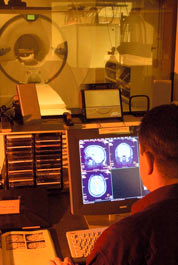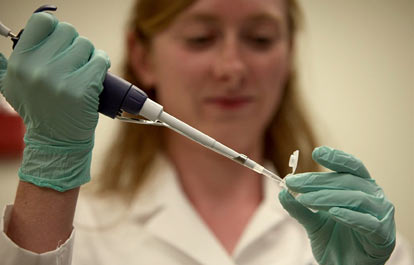

Children’s Studies Current Research //
CURRENT RESEARCH
Child Studies
Multisensory Integration in Fetal Alcohol Spectrum Disorders: A Possible Biological Marker from MEG
Purpose of Study: To identify changes in brain function due to alcohol exposure during pregnancy in order to be able to identify these changes at a young age in order to improve long-term outcome.
Summary: You will sit with your head in the safe and non-invasive magnetoencephalography (MEG) device . You will view a video of animated objects while remaining as still as possible. MEG will record the biomagnetic brain sig-nals that are always naturally-occurring and given off by the brain. The MEG takes about 1 hour. You will get an MRI scan, which will also take about 1 hour. You will also receive a no-cost developmental assessment by a clinical neuropsychologist.
Inclusion Criteria: Child is age 8-12 years of age and was exposed to alcohol during pregnancy. We are also including children who are are in the following groups: 1) developing normally, 2) have a diagnosis of ADHD, 3) have a father diagnosed with substance use disorder (alcohol), or 4) raised in a household with food insecurity (limited or uncertain availablity of food).
Research Papers/Posters:
Delays in Auditory Processing Identified in Preschool Children with FASD (Paper)
Delays in Auditory Processing Identified in Preschool Children with FASD (Poster)
(HRRC# 08-529, PI Julia Stephen, Ph.D.)
To view the brochure click here.
To view the consent form click here.
ENRICH (Ethanol, Neurodevelopment, Infant and Child Health) Study
Study period: 07/15/2013 – 06/30/2018
Purpose of Study: The long-term goal of our research program is to address the clinical challenge of developing early and reliable evidence of prenatal alcohol exposure (PAE) in infants so that interventions can be implemented at earlier stages of development. The objective of the ENRICH study is to recruit 120 children using an innovative approach for the assessment of PAE, through the combined use of a novel panel of maternal and infant ethanol biomarkers and validated maternal questionnaires, and then to measure neurodevelopment using state-of-the-art magneto- and electro-encephalography (MEG/EEG) and behavioral measures at 6 & 20 months of age to identify early indices of functional brain damage in these children.
Inclusion Criteria: Pregnant women are recruited during one of their prenatal care visits (between 12 and 35 weeks gestation) from the UNMH prenatal clinics.
(HRRC# 12-390, PI Julia Stephen, Ph.D.)
To participate, please contact our study's coordinator by phone or email: (505) 272-9297 or childstudy@mrn.org
Dev-Cog Study: Quantifying Brain Dynamics and Related Genetic Factors in Childhood
Purpose of Study: This research study is designed to map the developmental trajectory of functional and structural brain networks in healthy children and adolescents. Additionally, we aim to understand the genetic factors that promote this process and enable the most “cognitively advanced” systems. This study is sponsored by the National Science Foundation.
Summary: Child will complete 2-3 visits per year for 2-4 years. The study uses non-invasive and harmless techniques, MEG (Magnetoencephalography), fMRI/MRI (functional magnetic resonance Imaging), saliva genetics collection and behavioral measures. Participants will be compensated for their time.
Inclusion Criteria: Children are eligible to participate if he/she is between the ages of 9 and 15, speaks English, has never been diagnosed with a psychiatric or neurological disorder, and is medically healthy. Parent(s) must be able to give valid informed consent and the child must be able and willing to provide assent to the study procedures.
(HRRC # 12908, PI Julia Stephen, Ph.D.)
To participate, please contact us at: (505) 227-3199 or childstudy@mrn.org.
PREVIOUS RESEARCH
Preterm Infants' Mu-rhythm Suppression Evaluation Study (PrIMES)
Purpose of Study: The purpose of the study is to characterize brain signatures of motor development and imitation in young infants born prematurely compared to healthy infants measured at both 3 & 6 months corrected age. The study uses two completely harmless, non-invasive measuring techniques, MEG (magnetoencephalography) and EEG (electroencephalography), to measure brain activity which naturally occurs during rest and activity.
(HRRC# 11-643, PI Julia Stephen, Ph.D.)
Characterization of Multisensory Integration in Infants and Toddlers with Typical and Atypical Development
Purpose of Study: To identify changes in brain function due to atypical brain development as seen in neurodevelopmental disorders such as autism.
(HRRC # 07-140, PI Julia Stephen, Ph.D.)
High Frequency Activity in Infants with Epilepsy
Purpose of Study: To evaluate high frequency activity identified in children with epilepsy, which can help provide important information about where seizures are generated in the brain.
(HRRC # 08-057, PI Julia Stephen, Ph.D.)

